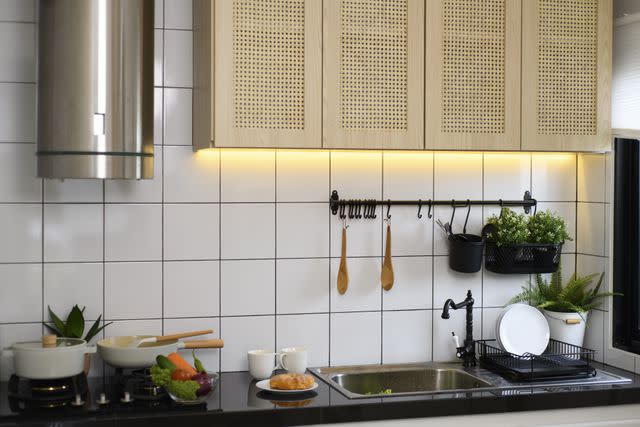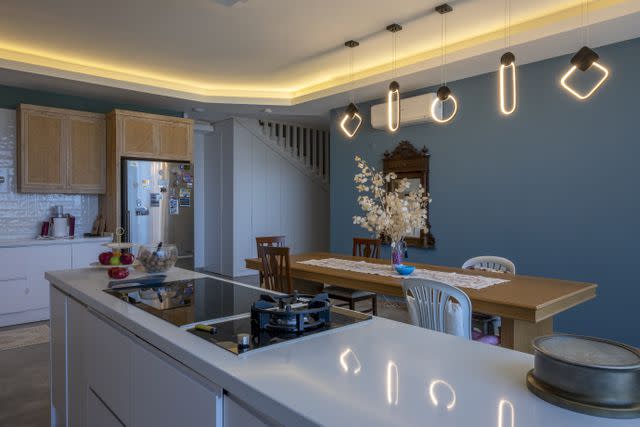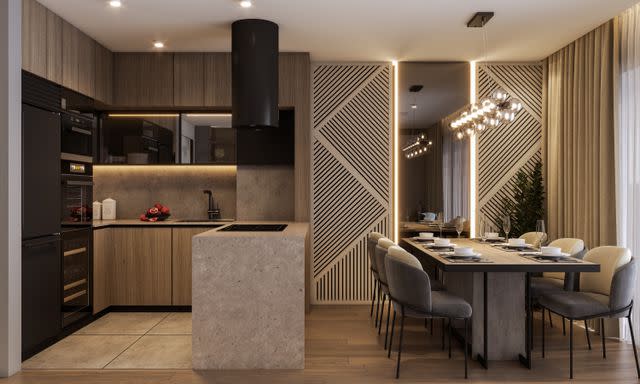5 Lighting Mistakes You're Making in Your Kitchen, According to Experts
:max_bytes(150000):strip_icc():format(jpeg)/GettyImages-168639784-12fdee37796e4bed956501cc7d652ba0.jpg)
Alex Potemkin / Getty Images
Poor lighting can make even the most stylishly designed spaces seem unattractive and feel uncomfortable. Shadowy spots, especially corners, can even lead to eye strain, headaches, and unnecessary accidents.
According to experts, many people are making big kitchen lighting mistakes and they don’t even know it. From an overreliance on overhead light fixtures to inadequate task lighting, most kitchen lovers are simply not thinking about layers and ignoring color temperatures altogether.
Thankfully, according to the 2024 U.S. Houzz Kitchen Trends Report, nearly four out of five homeowners prioritize lighting upgrades during kitchen renovations. Here are the most common kitchen lighting mistakes and remedies that experts suggest.

Kanok Sulaiman / Getty Images
Inadequate Task Lighting
“Every design starts with a solid lighting plan. No one can see how cohesive and beautiful the textures are if it's not light with ambient, accent, and task lighting. A space that's well-done has all three elements,” says Shireen Bailey of Green Shareen Design.
Task lighting is described as bright, focused light that targets specific work areas. Kitchens have many work areas, like over sinks, stoves, food prep areas, and kitchen islands. While most designs already include overhead lighting for ambiance, they don’t always account for where you and your family are most likely to situate yourselves for specific tasks.
Whether it is over cookbooks, under countertops, or above appliances, task lighting can make all the difference in functionality.
Not Thinking Layers
Consider how lights will layer to blanket the whole room with the brightness you need to make good use of the space. Recessed or track lighting can help–as can wall sconces or undercabinet lights. A variety of light sources will make your kitchen more responsive to your needs, but you have to make sure they are well-placed for the workflow in the room.
Pendant lights can also be useful in your space, but California real estate broker, Samantha Sousa, says to be careful with placement. She says many people use “pendant lights incorrectly. Either the lights are set too low, they don't match the decor, or they are not centered on a focal point, like an island or work surface.”
Don’t expect one kind of light to serve the whole room. Plan for layers.

Mehmet Hilmi Barcin / Getty Images
Ignoring Color Temperature
Color temperature refers to the warmth or coolness of a light bulb. It is measured in degrees Kelvin (K). Choosing the wrong color temperature for kitchen lighting can significantly impact the ambiance.
For example, while opting for cool white or daylight bulbs may seem practical for visibility, it can result in a harshly bright environment. Warm color temperatures, around 2700-3000 Kelvin, can achieve an inviting glow similar to natural lighting.
“A kitchen is a workspace that needs bright light, and plenty of light. By not using enough lighting, or by using too warm lighting, it makes a kitchen less functional,” says Sousa.
Consider also how different light sources will interact with each other. For example, mixing warm-toned under-cabinet lighting with cool-toned overhead fixtures can create a disjointed look.
To maintain consistency, stick to the same color temperature throughout the kitchen, ensuring that all lighting elements work together harmoniously and create a cohesive design aesthetic.
Dismissing Dimmer Switches
Bright light is ideal when preparing meals, reading recipes, hosting large parties, and more. However, it's not the best option if you wish to have quaint or intimate dinners. Dimmer switches are essential in the kitchen because they allow you to adjust the lighting levels based on the occasion and the time of day.

Vlajs / Getty Images
Not Prioritizing Energy Efficiency
The kitchen tends to have more lighting fittings and fixtures than most other rooms in the house. This is why overlooking energy efficiency can lead to higher utility bills and negative environmental impacts. By failing to check energy consumption, homeowners may end up with lighting solutions that are costly to operate, undermining the overall price-to-value of any kitchen upgrade.
LED lighting can help reduce energy consumption. These lights are 80% more energy-efficient than fluorescent lights and offer a remarkably long lifespan of up to 50,000+ hours. They are durable and emit very little heat, which is ideal in an already well-used kitchen.
Read Next: 55 Kitchen Lighting Ideas to Brighten Up Your Life
Read the original article on The Spruce.

